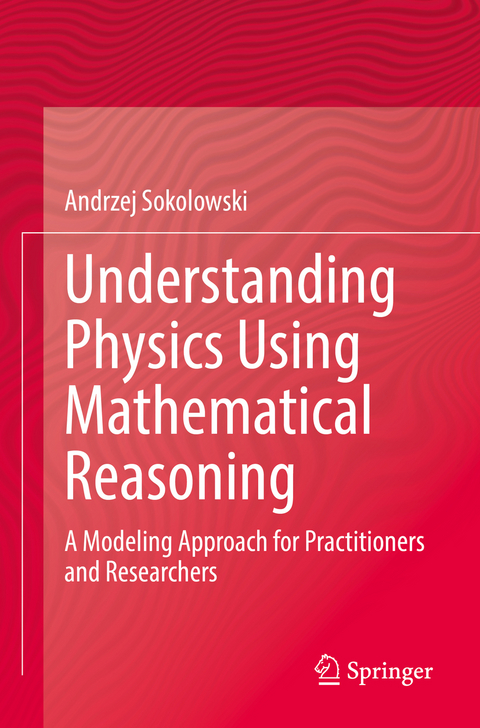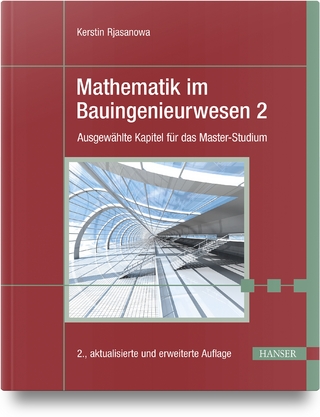
Understanding Physics Using Mathematical Reasoning
Springer International Publishing (Verlag)
978-3-030-80207-3 (ISBN)
This book speaks about physics discoveries that intertwine mathematical reasoning, modeling, and scientific inquiry. It offers ways of bringing together the structural domain of mathematics and the content of physics in one coherent inquiry. Teaching and learning physics is challenging because students lack the skills to merge these learning paradigms. The purpose of this book is not only to improve access to the understanding of natural phenomena but also to inspire new ways of delivering and understanding the complex concepts of physics. To sustain physics education in college classrooms, authentic training that would help develop high school students' skills of transcending function modeling techniques to reason scientifically is needed and this book aspires to offer such training
The book draws on current research in developing students' mathematical reasoning. It identifies areas for advancements and proposes a conceptual framework that is tested in several case studies designed using that framework. Modeling Newton's laws using limited case analysis, Modeling projectile motion using parametric equations and Enabling covariational reasoning in Einstein formula for the photoelectric effect represent some of these case studies. A wealth of conclusions that accompany these case studies, drawn from the realities of classroom teaching, is to help physics teachers and researchers adopt these ideas in practice.Dr. Andrzej Sokolowski, a researcher, and professor of mathematics and physics has an international track record of developing innovative teaching strategies in mathematics, physics, and STEM. His research focuses on integrating curricula of these disciplines through modeling. Andrzej is the author of "Scientific Inquiry in Mathematics- Theory and Practice" published by Springer, Inc., as well as several book chapters and numerous articles published, among others, in Physics Education Journal, Australian Senior Mathematics Journal, and International Journal of Physics and Chemistry Education. He is also an active reviewer for a number of periodicals including Mathematical Association of America (MAA), International Journal of Mathematical Education in Science and Technology (IJMEST), and IOPscience.
PART I: Synthesis of current research on developing mathematical reasoning in physics education
Chapter 1. The nature of physics
Chapter 2 The role of mathematics in learning physics
Chapter 3 Challenges of developing mathematical reasoning in physics.
Part 2: Developing Theoretical Framework
Chapter 4 Algebraic functions as a tool for predicting system behavior
Chapter 5 Functions as a visual aid to visualizing relations between system quantities
Chapter 6 Conceptualizing function attributes.
Chapter 7 STEM modeling as a means of converting relations between physical quantities intoPart 3. Collection of Case Studies
Chapter 8 Linear functions and modeling uniform motion
Chapter 9 Linear functions and modeling the photoelectric effect
Chapter 10 Parametric equations and modeling projectile motion
Chapter 11 System of equations and modeling Newton's laws
Chapter 12 Rational functions and modeling the Doppler Effect
Chapter 13 Rational functions and modeling the lens equation
Chapter 14 Rational functions and modeling parallel connections
Chapter 15 Rational functions and modeling forces of gravity
Chapter 16 Trigonometric functions and modeling torque
| Erscheinungsdatum | 23.08.2022 |
|---|---|
| Zusatzinfo | XI, 208 p. 57 illus., 39 illus. in color. |
| Verlagsort | Cham |
| Sprache | englisch |
| Maße | 155 x 235 mm |
| Gewicht | 340 g |
| Themenwelt | Mathematik / Informatik ► Mathematik ► Angewandte Mathematik |
| Naturwissenschaften ► Physik / Astronomie | |
| Sozialwissenschaften ► Pädagogik ► Schulpädagogik / Grundschule | |
| Schlagworte | Algebraic modeling in physics • Developing deeper inquiry skills in physics • Developing students' STEM readiness • Exercising STEM in physics • mathematical reasoning |
| ISBN-10 | 3-030-80207-8 / 3030802078 |
| ISBN-13 | 978-3-030-80207-3 / 9783030802073 |
| Zustand | Neuware |
| Haben Sie eine Frage zum Produkt? |
aus dem Bereich


